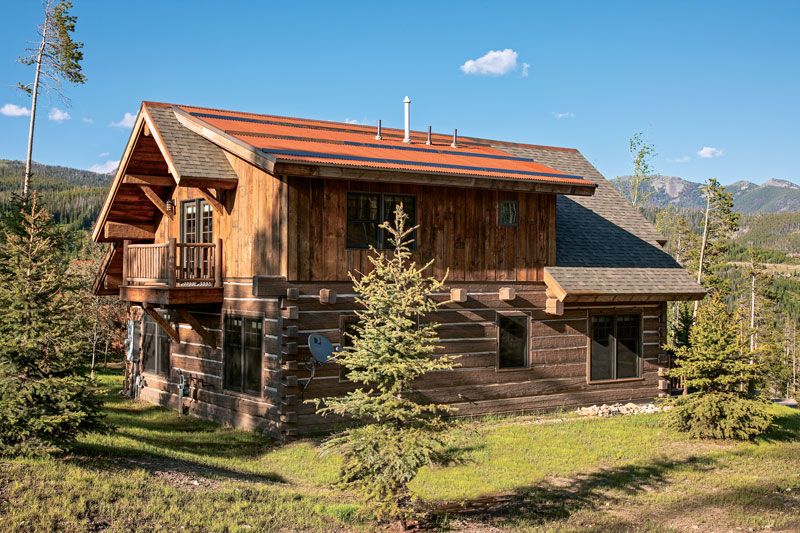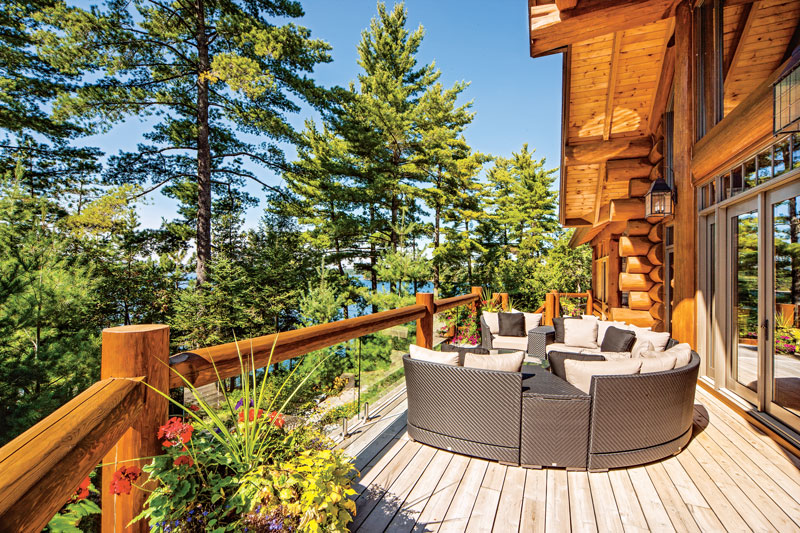Six tips for creating a budget-friendly, reality-based log home construction schedule with your general contractor or builder.
By Jim Cooper

1. Before I create a construction schedule with my builder, what are the top three secrets of coming up with a schedule that actually works?
As you might guess, there are many challenges for your builder or general contractor. These include twists such as subcontractors who occasionally may not show up, suppliers who don't deliver materials on time and lousy weather. But don't sweat it. These challenges are nothing new, and your builder has dealt with them for years (and probably has a score of gorgeous homes to showcase). The first secret of scheduling success won't cost you a dime: Talk with someone who has recently had a custom home built for his family. Ask him what he'd do differently and when his greatest surprises came. Look for sample construction schedules in project-management software and online. Finally, talk with builders who are experienced with log home construction. When thinking about your initial schedule, work either forward or backward and consider "critical-path" items on your checklist—tasks that must be completed to move to the next step. For example, foundation walls must be erected before the subfloor can be installed. Before foundation walls can be built, footings must be poured, and before that can be done, the foundation and footings must be excavated. Items such as the septic system typically aren't part of the critical path because your builder has a fairly wide window of opportunity to install them. Once you and your builder have figured out critical-path items for your final home-building checklist, plug in the non-critical items (from HVAC to gutters) at the earliest possible date they can be scheduled and completed.
2. What's a realistic timeframe for building a custom log home with nice amenities?
Six months from ground breaking to completion is a minimum timeframe for most custom log homes. Of course, it also can take up to a year or more if you want more elaborate finishes, build a massive home in a challenging location (say, on top of a difficult-to-reach mountain) or choose a more complicated log system. Remember, don't include pre-construction activities (design, obtaining permits, etc.) in your actual construction timeline. Begin with approval of the building permit and work from there. If you can complete preliminary activities such as site clearing before the permit is issued, you'll be ahead of schedule.

3. What should a construction schedule actually look like?
A construction schedule should have the start time and duration of each activity. In addition, it's good to allow for additional time to cover delays due to weather, schedule conflicts with subcontractors or supplier delays. One good tool is called a Gantt chart. Activities are listed in sequence down the left side of the chart, and dates from beginning to end are listed across the top. The time required for each activity is shown as a horizontal bar on the appropriate line; the correct dates and locations correspond with what you've already discussed and agreed to with your building team. If you're using a general contractor, the schedule may show only site preparation, foundation work, completion of a dried-in shell, completion of mechanical rough-ins and finish work. If you'll serve as your home's GC, your schedule will have to include a lot more. Under the heading "foundation," for example, you may have included: excavation, excavating footings, pouring footings, forming and pouring foundation walls, installing drain tile and insulation, waterproofing, backfilling and termite pre-treatment. If you're using a full-service foundation subcontractor, you may be able to abbreviate this list to show only excavation, foundation walls, backfilling, basement slab and termite treatment, since the other tasks will be included with the foundation-wall task by your subcontractor.
4. When I receive the construction schedule, what types of things should I pay close attention to?
General contractors usually don't provide a detailed construction schedule because of the flexibility and variation in most projects. Instead, they may provide an estimate of major milestones for the project. If you have any questions about these milestones, bring them up when you get the schedule. You certainly don't want to have any surprises two or three months into the project.
5. What if I modify the project once construction begins? How should the schedule reflect that I simply might change my mind about doors, windows or a finished basement?
When you put together your schedule, you may be surprised to find that it appears that your home can be completed in much less than six months. Yes, it's a pie-in-the-sky scenario that doesn't take into account all of the delays I've mentioned. It's hard to put a time figure to those delays, but you can be sure that some will occur. Over the course of a typical project, delays totaling two to four weeks aren't uncommon. Some changes are easy to overcome. But others, such as design modifications, can wreak havoc on a construction schedule. That's why it's best to make every effort to have your design finalized before construction starts. Unanticipated changes may not only double the time required for building, they also may double the cost. If there's a single thing that most home owners fail to appreciate it's the cost in time and money of making changes to their design during construction. There isn't a good way to accurately judge the time lost to weather, but adding a cushion of one to two days for each five days of anticipated construction time may cover this. As you might guess, weather-related delays can vary greatly with each season. Site preparation and foundation work during the hot, dry months of July and August may proceed quickly. A construction start in September or October may push outside activities into a season where an entire week or more at a time may be lost to upcoming winter weather.

6. What happens when my builder doesn't adhere to the schedule?
Most construction contracts include a duration or completion date. In some cases, home owners may add a penalty clause to cover expenses should the project go beyond a reasonable deadline. Because of the unpredictability of construction, many contractors won't accept a penalty clause or will require the addition of a number of exclusions to cover circumstances for which they can't be held responsible. For example, if a home owner makes significant changes during construction, this may invalidate the penalty clause. Simple reason: Changes affect the schedule by the length of time required to complete construction and by the time required to work the changes into subcontractor's schedules, obtain materials and rearrange previously scheduled work. One way to keep your project on track is to pay only after work is completed or when milestones are reached. If you always pay your contractor just after invoices come due, he'll have the incentive to return to your job. Also, never pay a contractor the final payment until all of the home inspections are complete. Construction scheduling is part art and part science. The art comes into play when you're building a working relationship with your builder and assessing how realistic the schedule is. Then science comes into play as you ask the right questions, talk to home owners who've already built their masterpiece and read everything you can about homebuilding. Hey, you've already begun tackling the last part of this equation.







